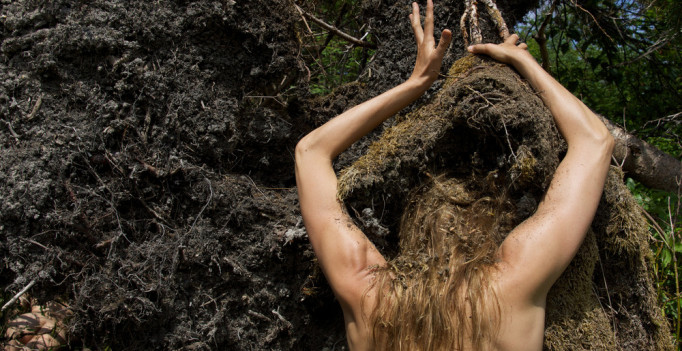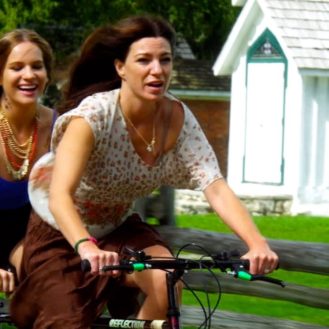The ReFrame Film Festival couldn’t wait to begin. On Thursday, January 28, the festival held an exclusive sold-out Ontario premiere of Anne Troake’s OutSideIn, an experimental 3D film that featured choreography in its rawest form from two partially nude performers (Carol Prieur and Bill Coleman).
The 40-minute film started off as an intriguing endeavour with Prieur extending her hands out of dirt and peat moss in what appeared to be an attempt to escape the environment around her. These shots and movements were intriguing, and also displayed Troake’s understanding of her state-of-the-art technology. Even vertical climbs passing convoluted tree roots stuck out – literally – as cool effects.
When Coleman emerges, the choreography becomes sensual without being inappropriate. The addition of a fish-eye lens also ups the ante in terms of different perspectives. My favourite shots included reeds protruding out of long grass towards the screen, and a moment where the camera – pressed up against the performers – started climbing a tree. OutSideIn’s bubble bursts, however, when the movie goer senses how much of a one-trick pony the short film really is.
While it initially appears as if the filmmaker wants to tell a story about nature and birth (perhaps aiming towards an Adam and Eve angle), that premise is abandoned when the choreography pushes itself to the forefront. For the rest of the film, the audience endures a series of awkwardly edited compositions featuring the lead dancers shifting and wiggling through a forest, rock walls, and a waterfall. Troake breaks up each scene with abrupt blackouts and chapters.
Without the film’s post-screening Q&A, everyone would’ve been lost. Thankfully, Anne Troake and Bill Coleman were in attendance to narrow down what OutSideIn’s goal was – to showcase “deep sensing” choreography within natural surroundings. So much for that Adam and Eve theory.
“Deep sensing”, or what Coleman calls “Ectoplasmotion”, involves performers searching within them, detaching themselves from the outer world, and connecting to the inner workings of their body. Coleman, who has also been researching at McMaster University’s LiveLab, explained his process to the audience and Troake talked about how difficult it was to capture certain movements on camera. These answers helped me figure out the film’s main problem; it’s why I would be willing to watch Coleman perform “deep sensing” in a theatrical setting.
I recently started meditating. I needed some sort of relaxation process to reset my week before diving into upcoming assignments. Meditation works for me, and I’ve been able to go places that are almost indescribable. But, would I make a movie about meditation? No – it would be shallow and uneventful.
OutSideIn belongs in the same boat. Some things that read well on certain platforms don’t transition as well on different mediums. This movie can’t walk us through “deep sensing” because the audience is viewing this activity on the surface. Watching Bill on stage would be unforgettable since we could see him go through uninhibited stages to allow himself to reach inside. The 3D presentation is an appreciative detail, but only enunciates the visuals around the movie’s subjects.
Bill Coleman will be performing at Peterborough’s Market Hall in April. It’s bound to be more expressive than Anne Troake’s ambiguous misfire OutSideIn.
**********
ReFrame Peterborough International Film Festival coverage:
Deep Web
Interview with Documentarian Alex Winter
Haida Gwaii: On the Edge of the World
After the Last River & Before We Arrive: The Story of The Weber Brothers
Click here to visit ReFrame’s official website!
Do You Tweet? Follow These Tweeple:
Addison Wylie: @AddisonWylie



Be the first to comment